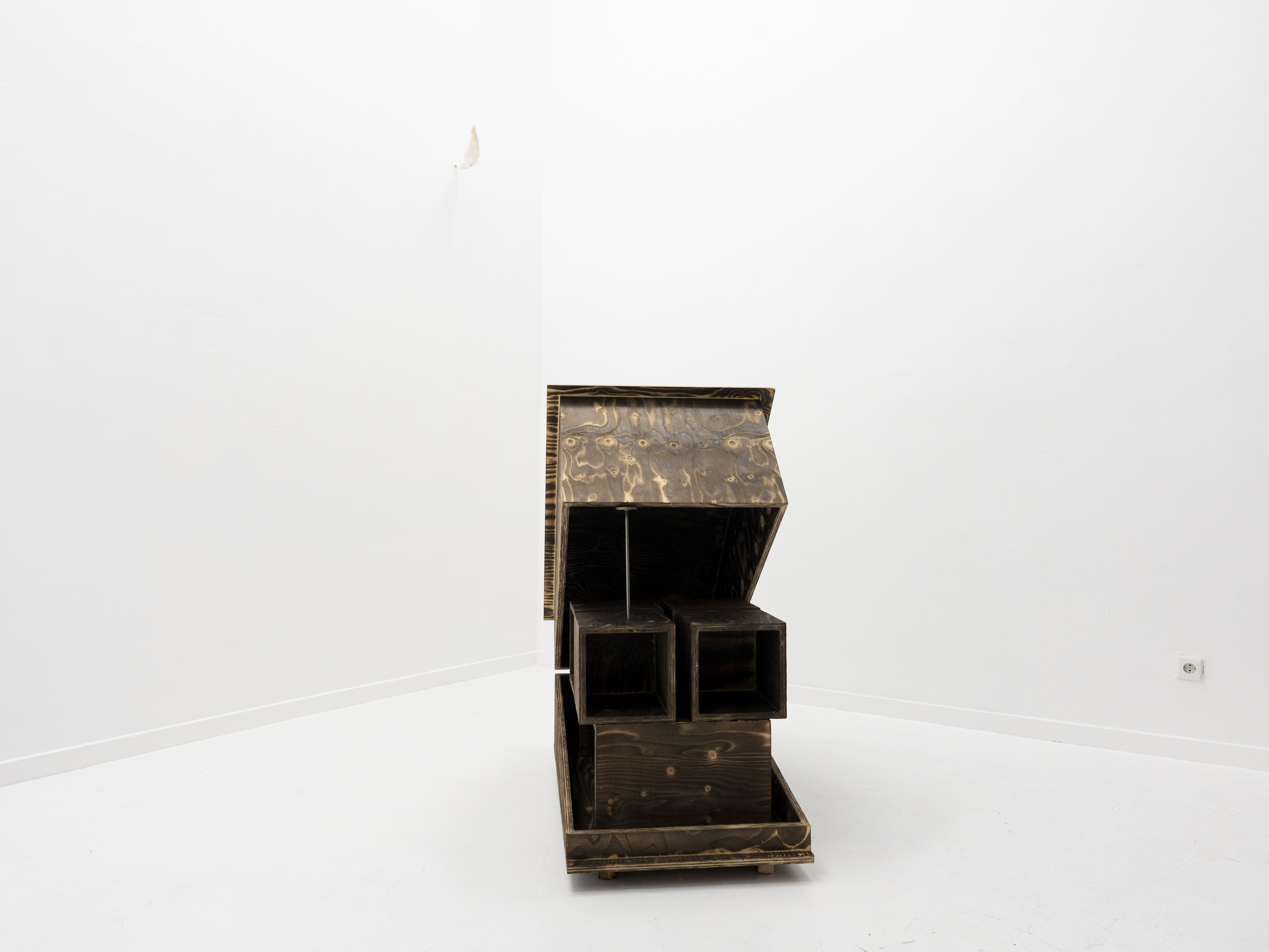
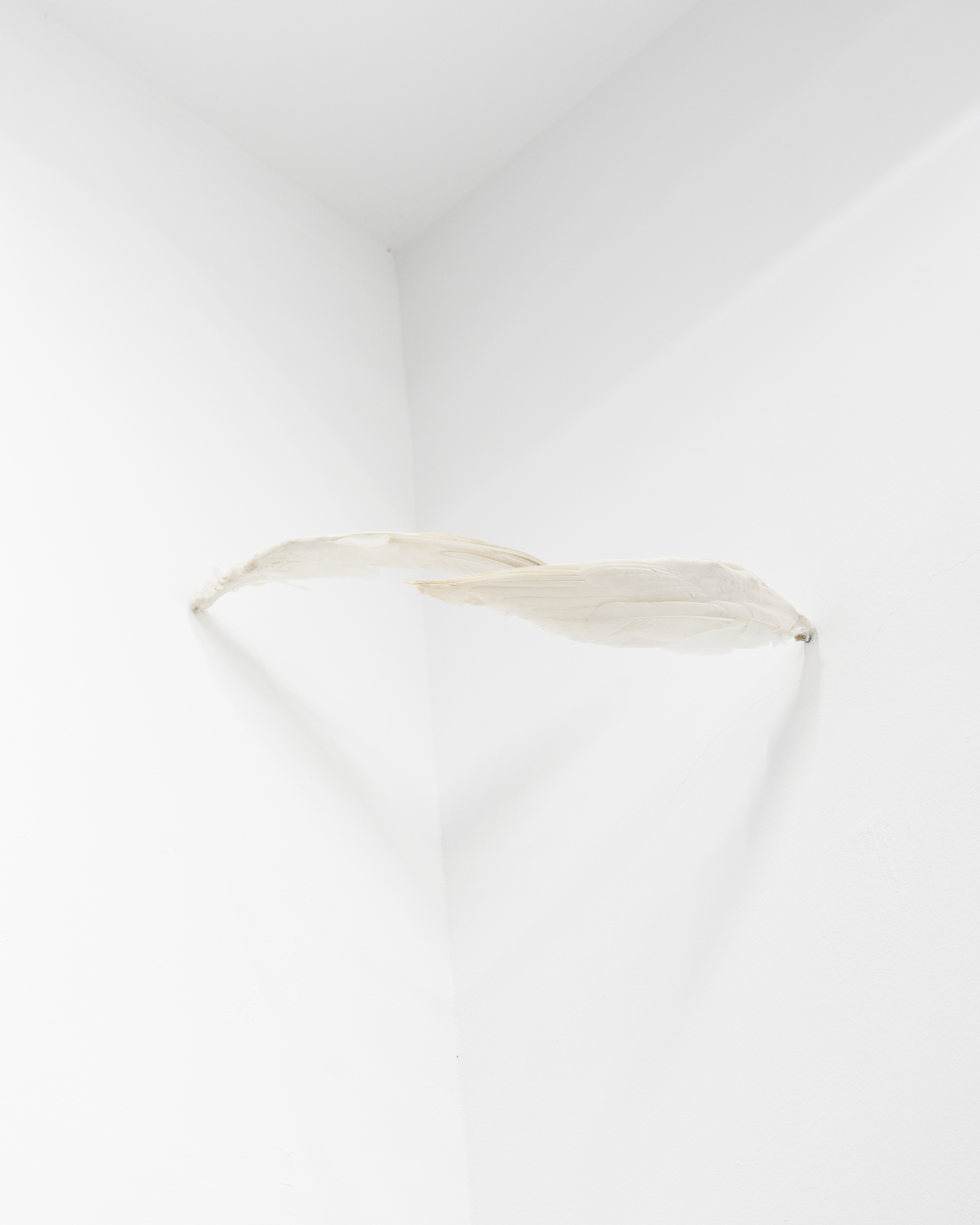
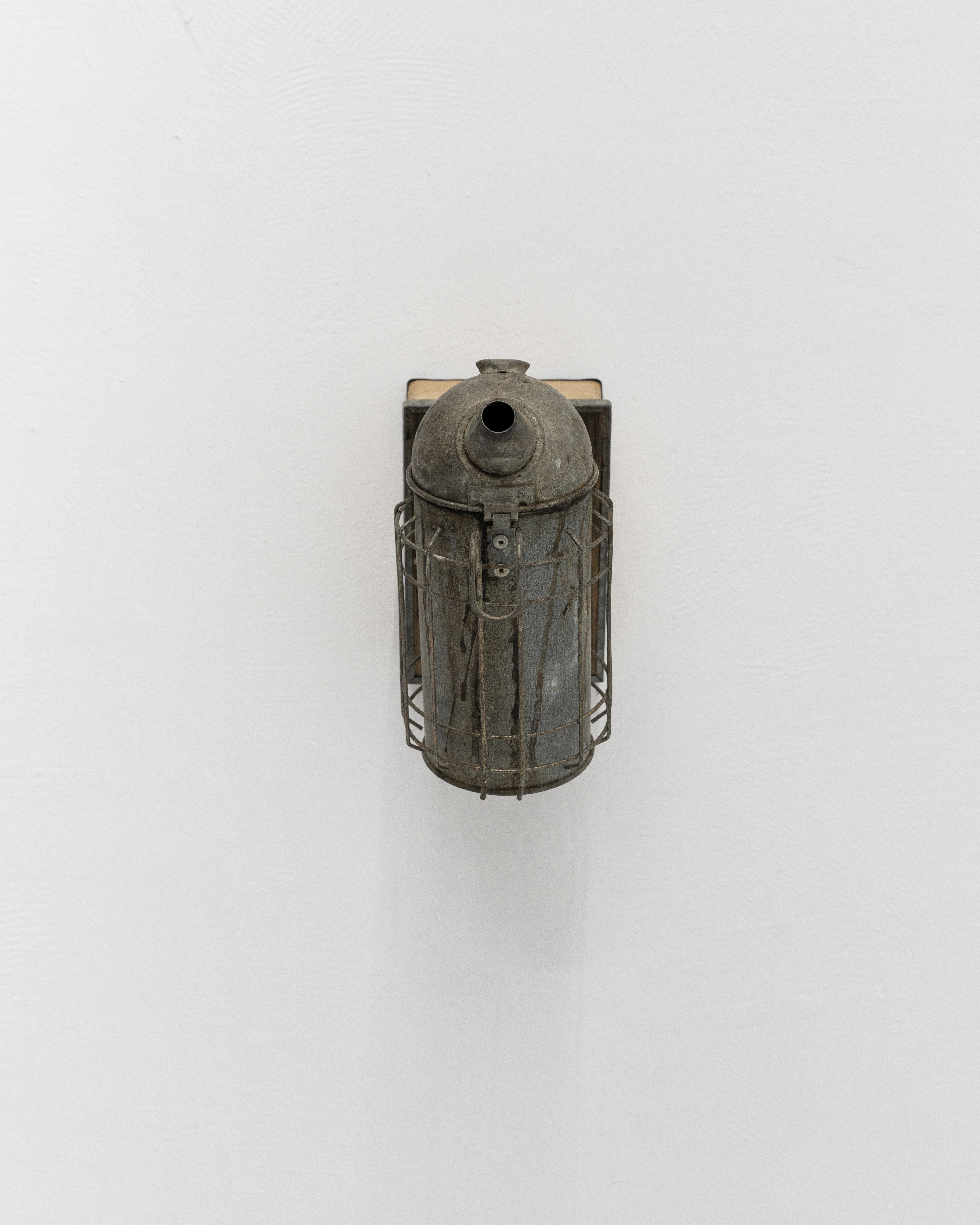
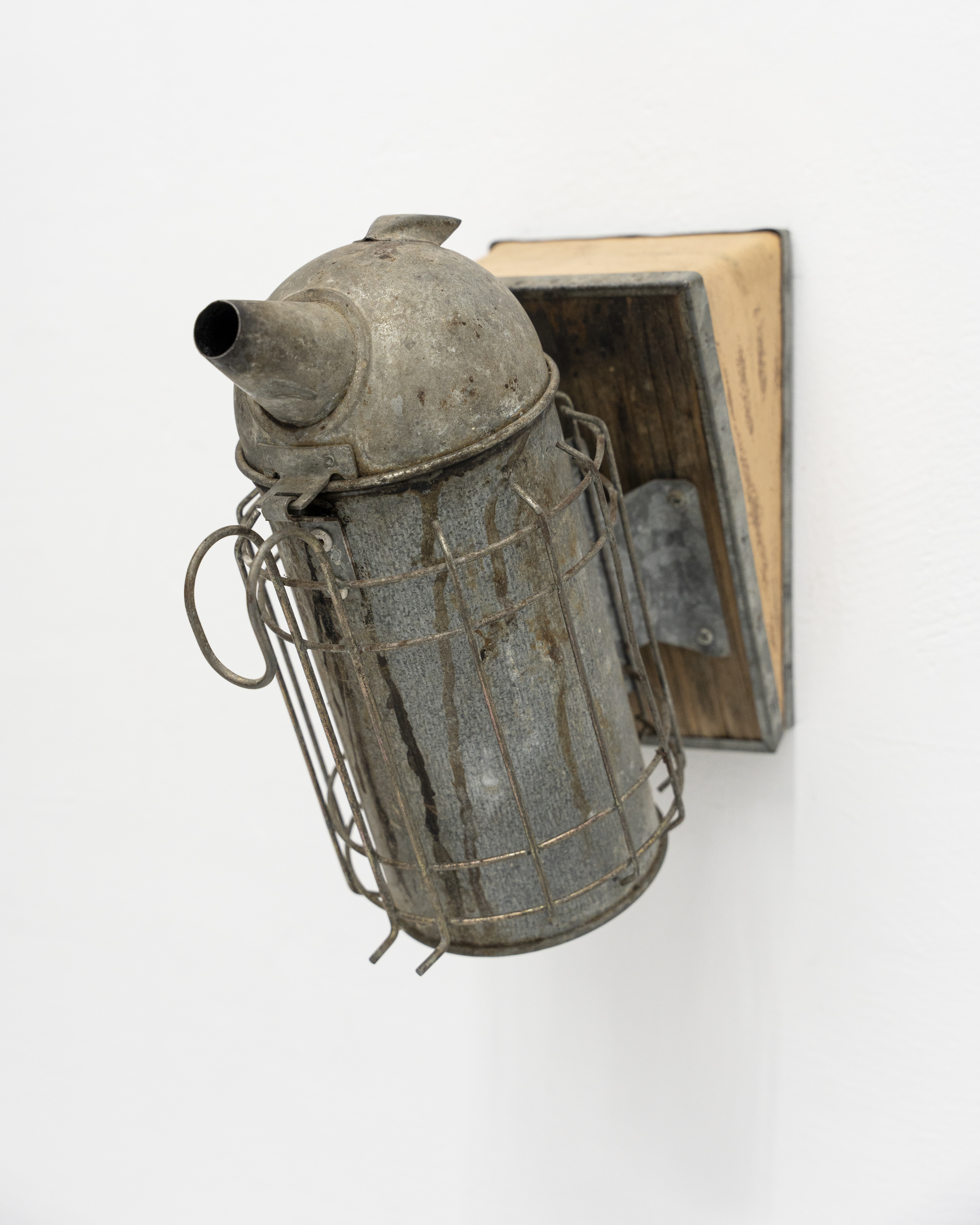
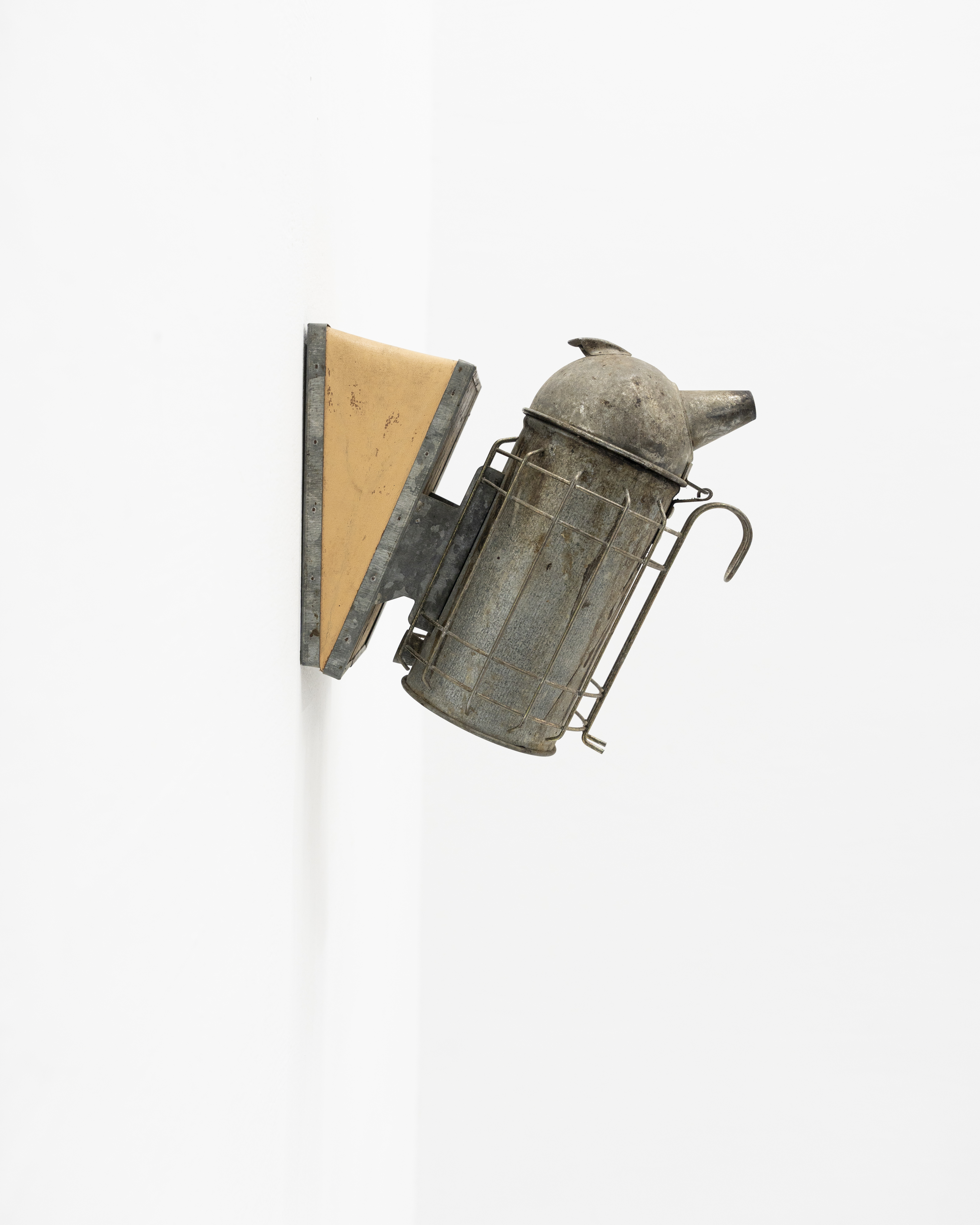
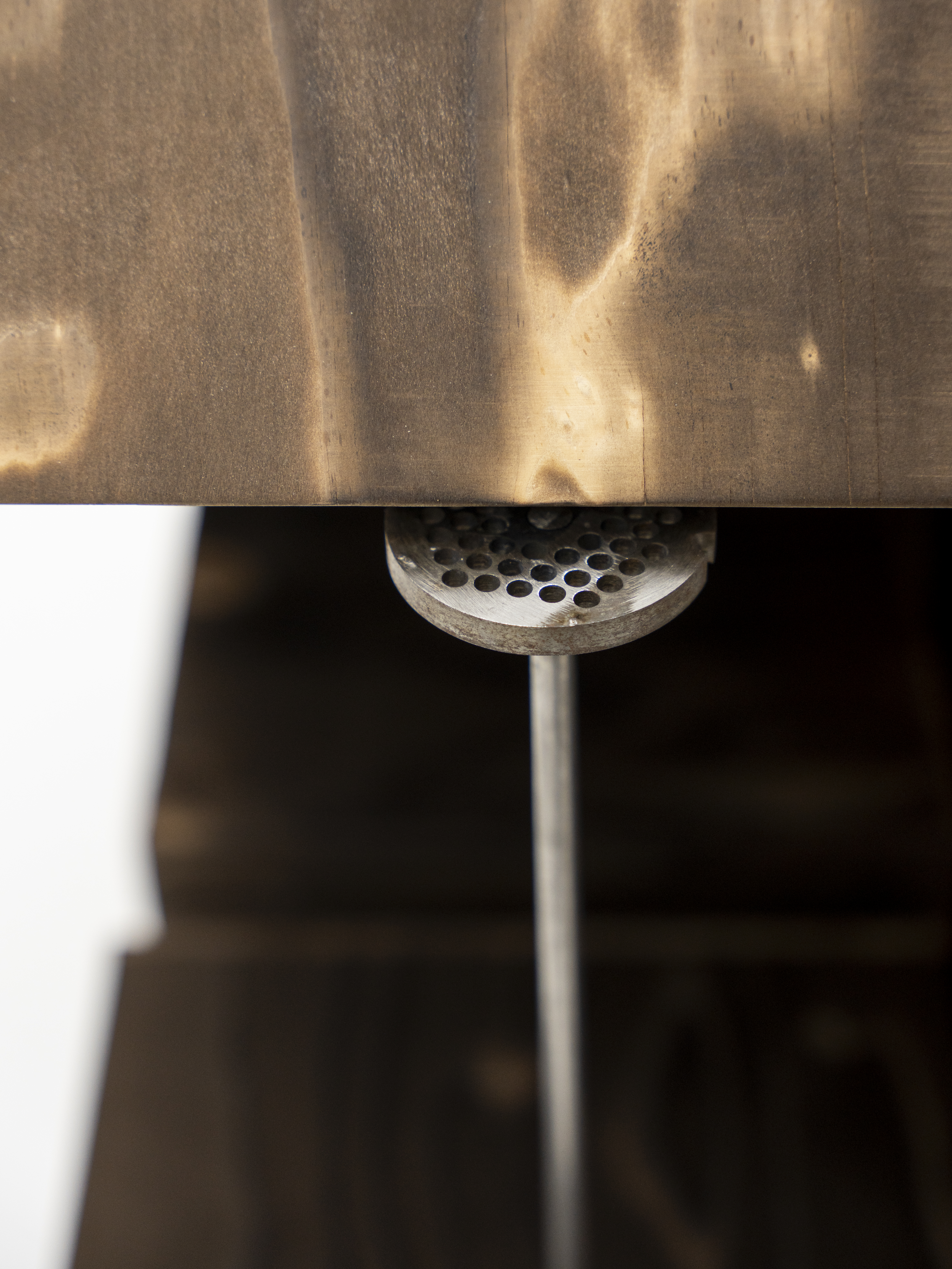
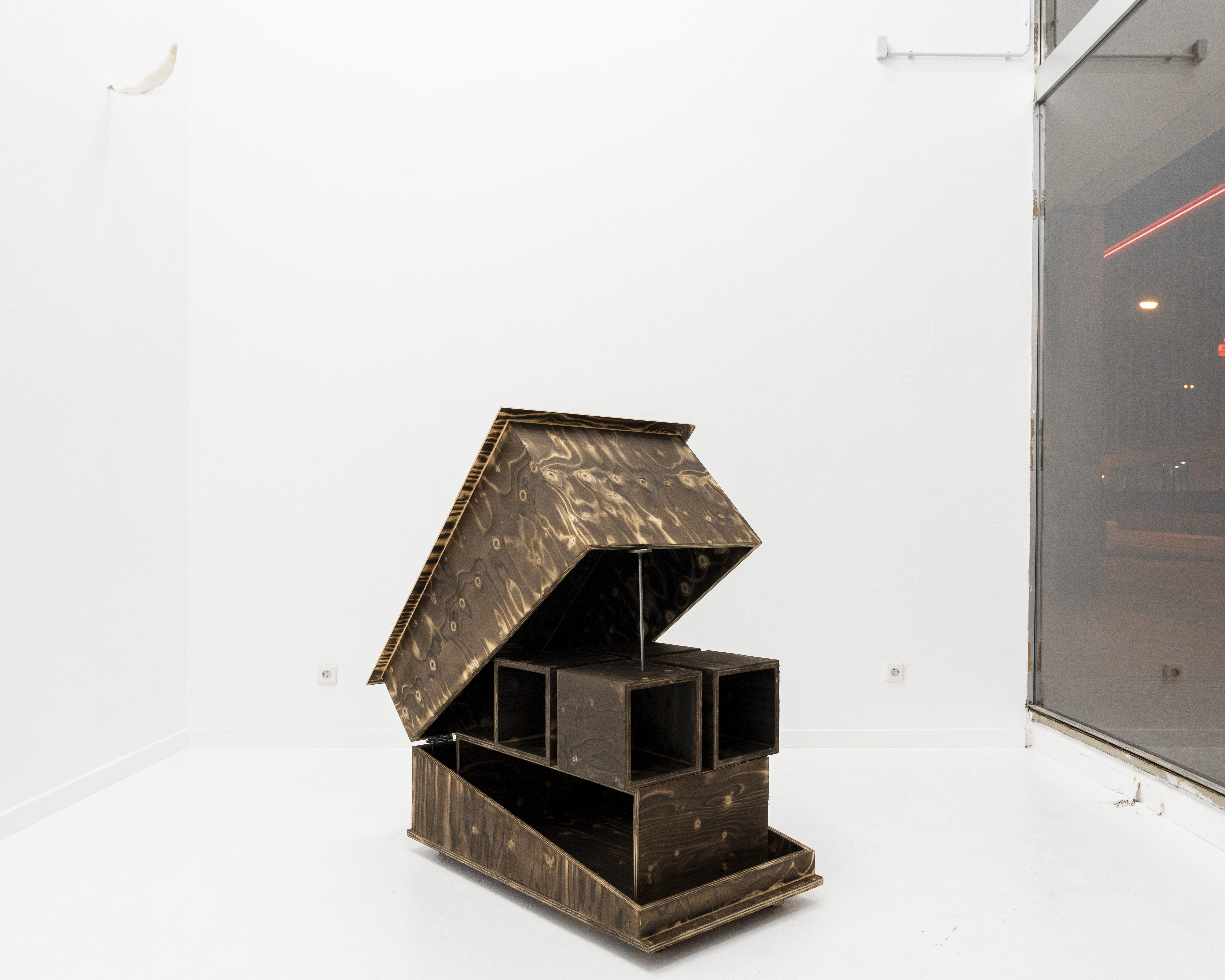
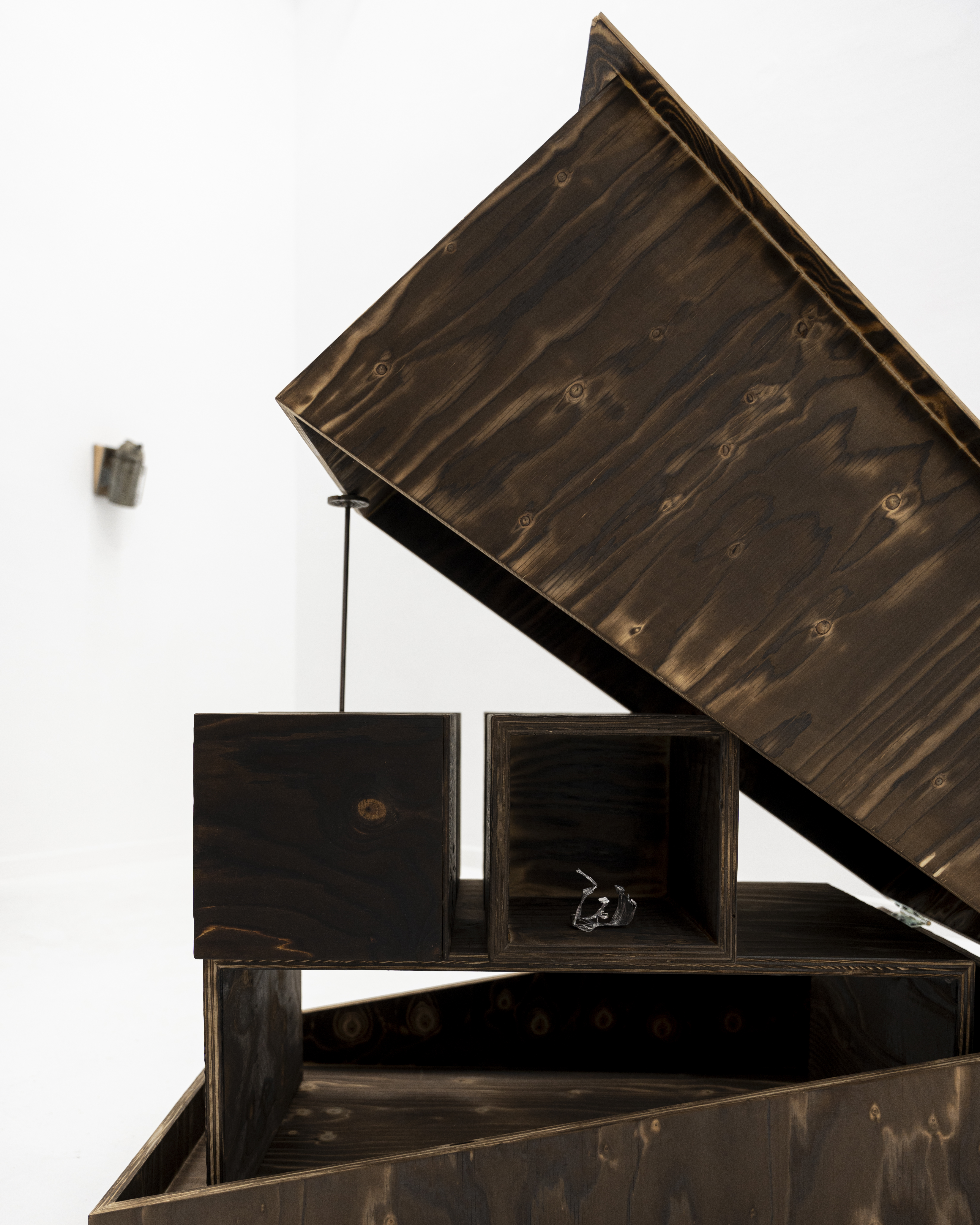

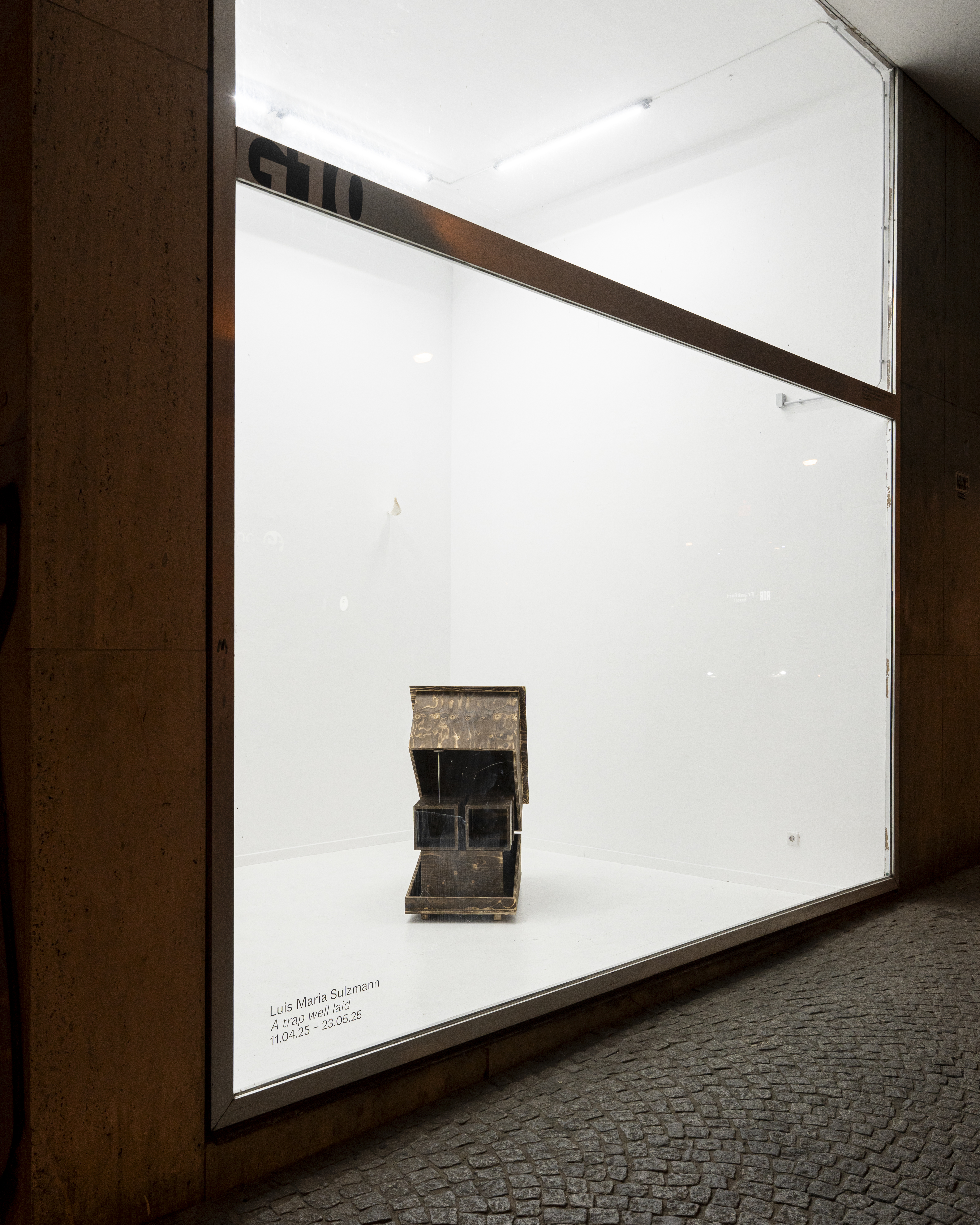
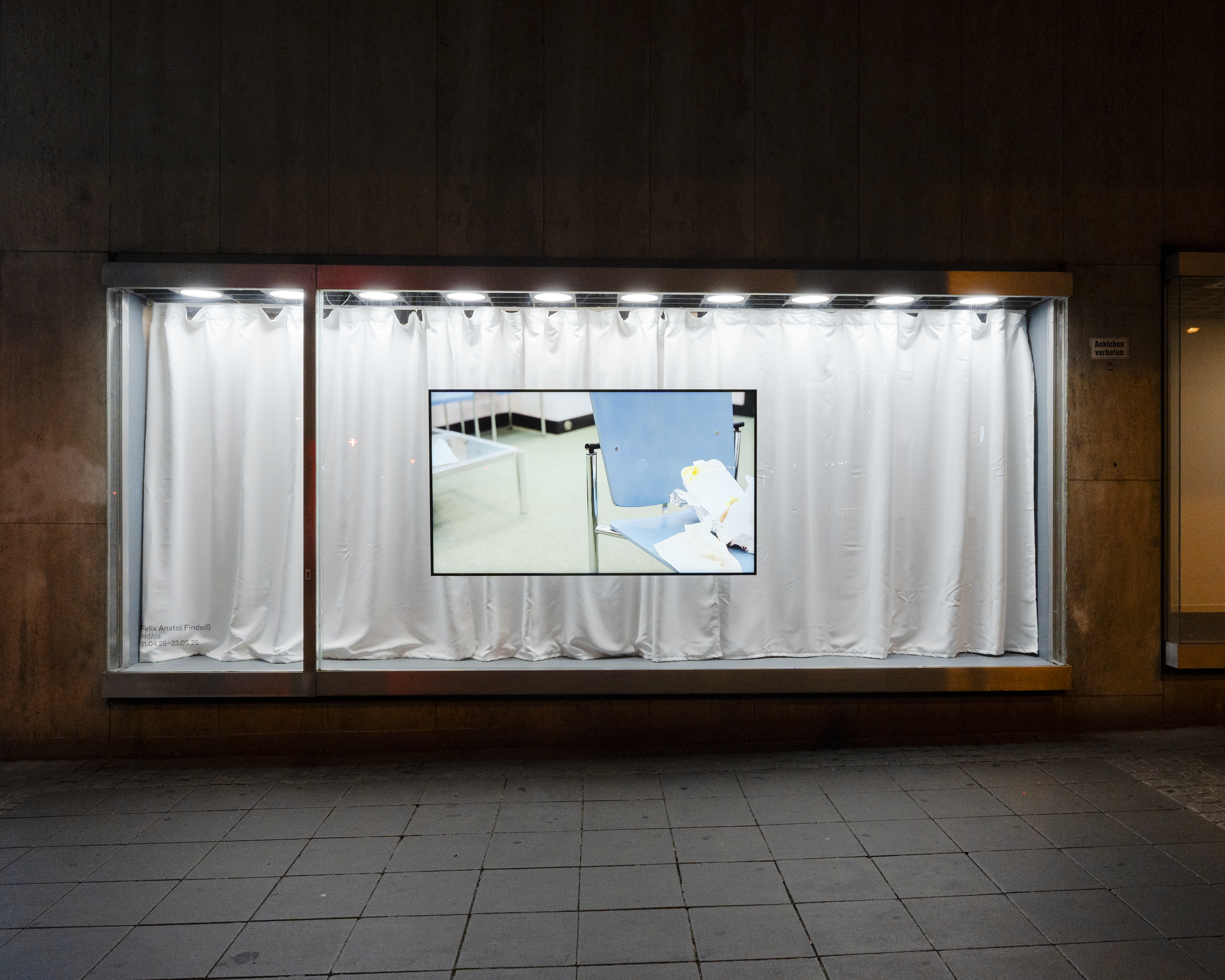
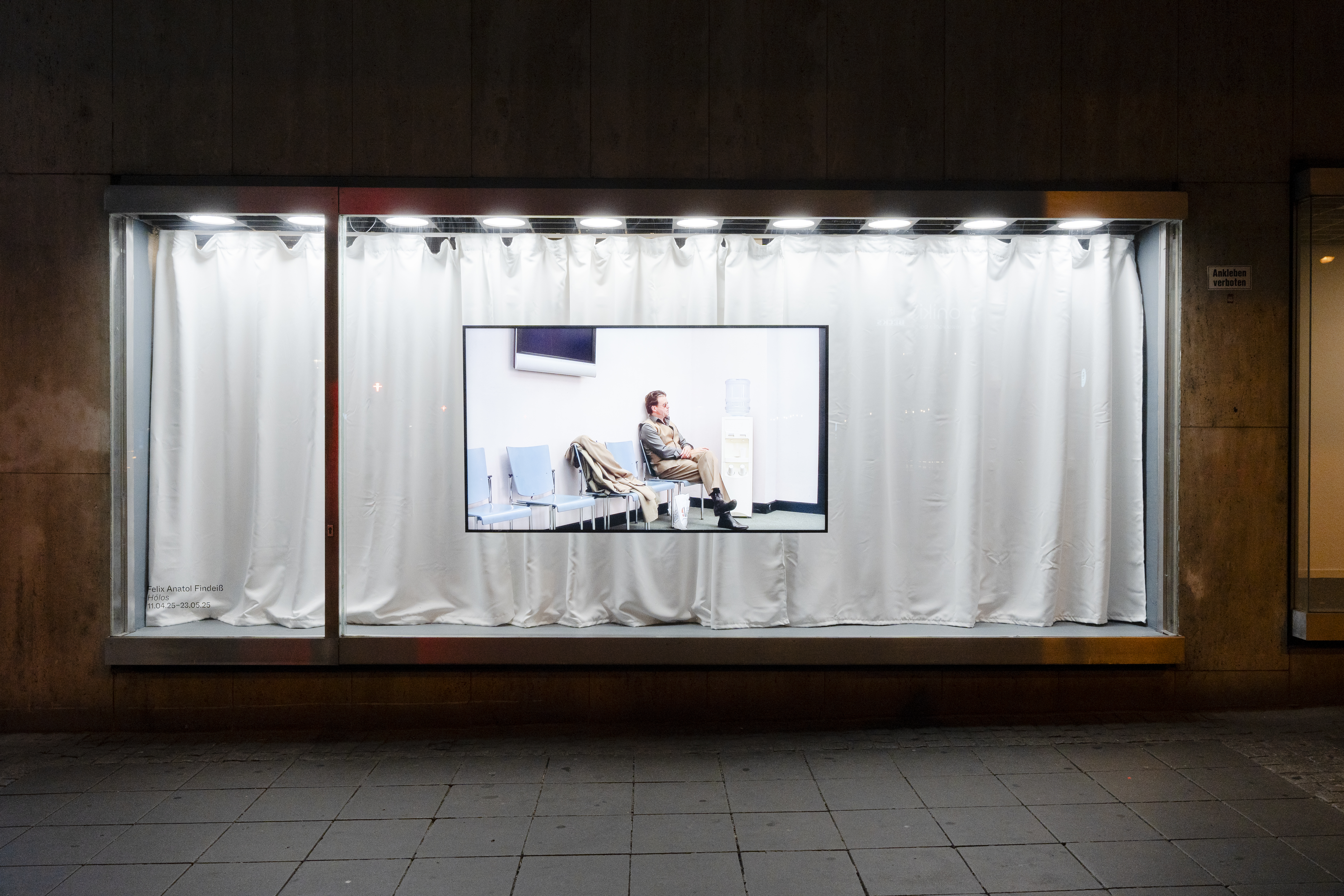
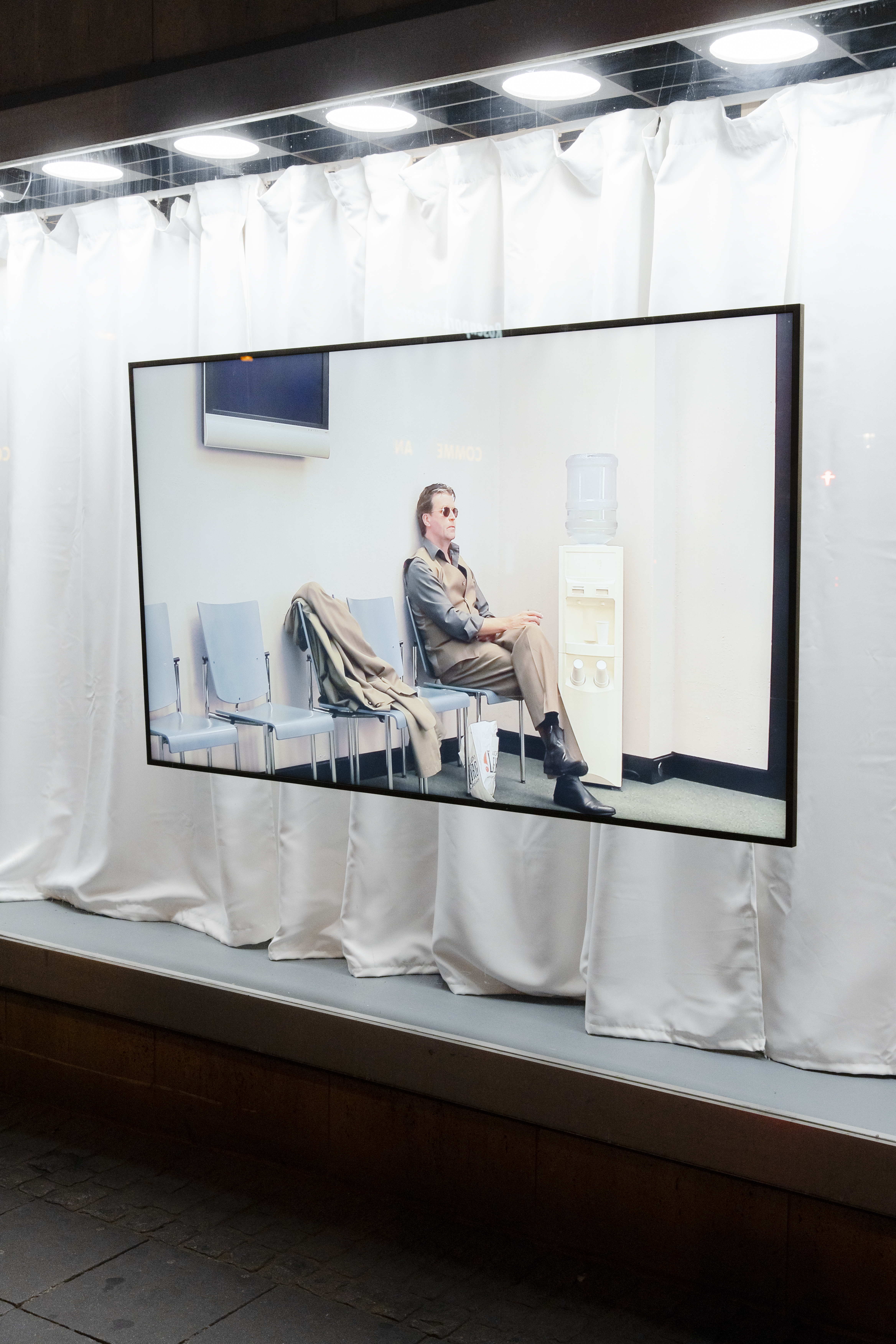

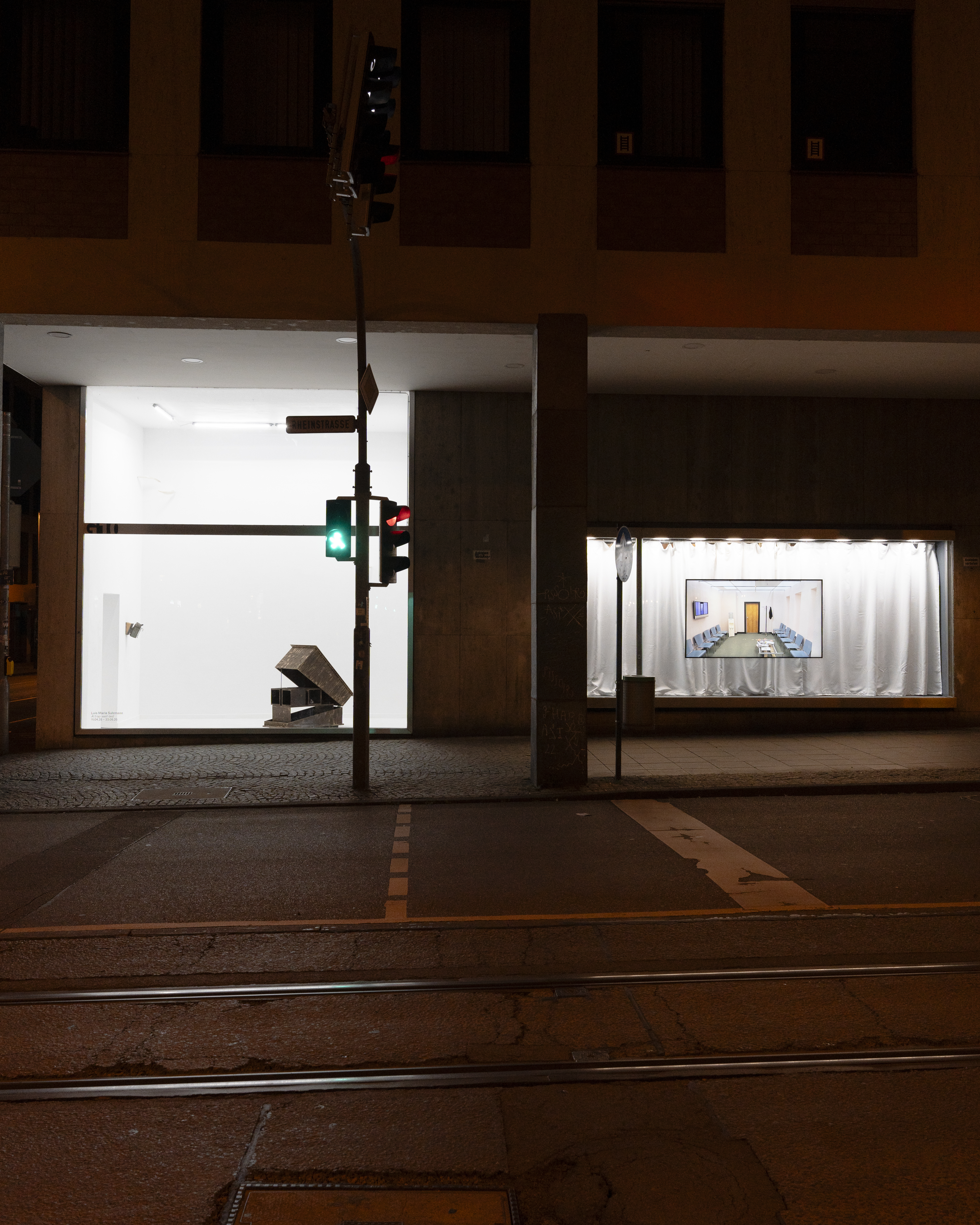
Luis Maria Sulzmann
A Trap Well Laid
The exhibition A Trap Well Laid by Luis Maria Sulzmann brings together various objects used in beekeeping businesses. These are tools and equipment for honey production that have been perfected over centuries to maximize yields. This capitalist and industrial approach views nature and living creatures as quantifiable resources, whose enhanced performance is expected to generate predictable growth and profit. Through the absence of insects, G10 Projektraum becomes a resonating chamber for the buzzing and eager activity of bees. Sulzmann questions the common human perspective—the anthropocentric point of view—and opens new fields of vision concerning an endangered group of insects.
The works presented in G10 are reminiscent of readymades—industrially manufactured objects removed from their original context and presented as artworks without modification. A beehive modeled by Sulzmann is based on a historical and scientific 19th-century design. This model revolutionized beekeeping with its modular structure, allowing beekeepers to intervene directly and observe the honeycombs. It is surprising that this device is still in use today—it seems to signal a return to older practices. While contemporary technologies are evolving so rapidly it’s almost impossible to keep up, time appears to have stood still for the beehive; its form remains pre-industrial and pre-technological.
Sulzmann's presentation appears objective. It is reminiscent of scientific textbooks, which promote a rational understanding of broader contexts while allowing for emotional detachment. However, upon closer inspection, unequal power dynamics are exposed: humans exploit nature as a resource for economic gain, repeatedly undermining the fundamental principles of life.
Luis Maria Sulzmann (*1998 in Hanau) has been studying at the Hochschule für Gestaltung Offenbach am Main since 2019 and at the Royal Academy of Fine Arts in Copenhagen since 2023. He lives and works in Copenhagen.
Felix Anatol Findeiß
hólos
The video work hólos by Felix Anatol Findeiß is presented in R15. The video explores various states of a fictitious waiting room: the conditions it currently embodies and those it provokes. In this pragmatic location, everything seems subject to the dictates of the ordinary and the whimsical—yet at least the interior elements are reliable characters. They can be arranged, integrated, or break free. Humans are, at best, incidental presences; atmosphere comes and goes; beauty is relative. The sculptural transitions the space undergoes as the protagonist form a narrative mesh. The sheer material provokes elusive sensitivities that those waiting must endure—sensations one may recognize or perhaps even secretly enjoy. At times, the room controls the situation; at others, it is at the mercy of itself. It is constantly engaged in navel-gazing. The waiting room, isolated like a film set, becomes a model of a broader reality.
Felix Anatol Findeiß (*1986 in Berlin) graduated in architecture from the Berlin University of the Arts in 2016. He lives and works in Berlin. His works are represented by Galerie 3AP.
Text: Carolina Maddè
Photography: Nils Heck/ Jonas Eickhof
Photography: Nils Heck/ Jonas Eickhof
